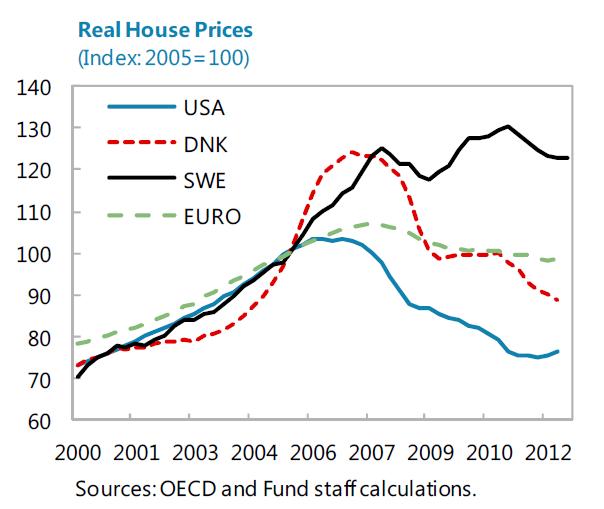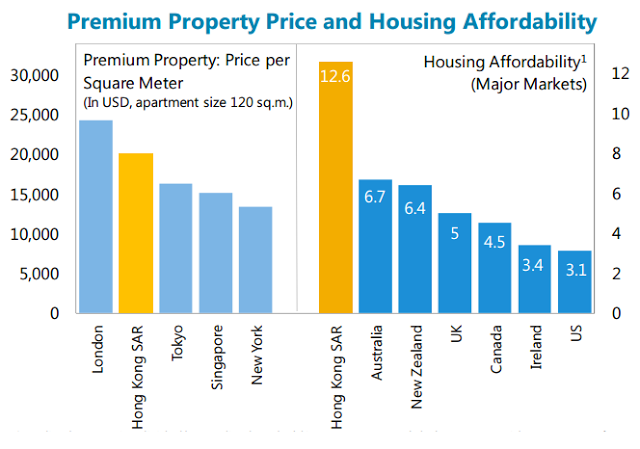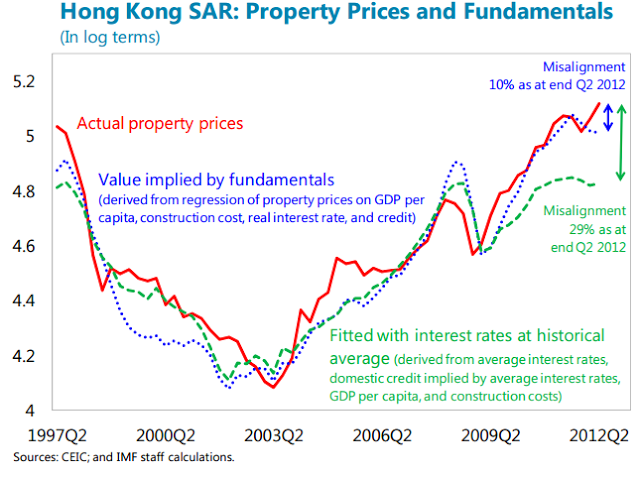Thursday, January 24, 2013
House Prices in Denmark
The latest IMF’s report on Denmark says that:
The Danish housing market continued its decline through 2011 and the first half of 2012, despite a short respite in 2010. Real house prices have fallen by 26 percent since their peak in 2007Q1, after a two-year period in which prices rose by over 60 percent. Housing starts declined by 17 percent in 2011, and by 28 percent in the first half of 2012 relative to the first six months of 2011. Year-on-year prices for the residential properties fell by 5–6 percent in 2012 Q2.
Indicators of house price misalignment are mixed. The price-to-income ratio and price-to-rent ratio remain above their 1970–2010 historical averages but by less than one standard deviation (0.7 and 0.9 respectively).
The housing market remains vulnerable. Mortgage loans with variable rates and deferred amortization loans (interest-only for 10 years) account for 74 and 56 percent of the mortgages respectively. Given the high debt levels of Danish households, this creates a threat of higher delinquencies should rates rise or incomes fall.
The latest IMF’s report on Denmark says that:
The Danish housing market continued its decline through 2011 and the first half of 2012, despite a short respite in 2010. Real house prices have fallen by 26 percent since their peak in 2007Q1, after a two-year period in which prices rose by over 60 percent. Housing starts declined by 17 percent in 2011, and by 28 percent in the first half of 2012 relative to the first six months of 2011.
Posted by at 2:48 PM
Labels: Global Housing Watch
Friday, January 18, 2013
House Prices in Hong Kong
Two different pricing models are examined, which provide some mild, but on balance inconclusive, evidence that prices are higher than suggested by current fundamentals.
Housing in Hong Kong SAR is expensive. Compared to other regions, house prices in Hong Kong SAR are less affordable as measured by the ratio of median household income to median house price. In absolute terms, U.S. dollars per square meter, prices are also relatively expensive and premium real estate prices are on par or higher than in other high-cost housing.
A regression-based approach indicates prices are about 10 percent above the level suggested by current macroeconomic fundamentals.However, the fundamentals themselves are in some sense abnormal, as loose global monetary conditions have pushed down considerably Hong Kong SAR’s real interest rate. The real interest rate, moreover, is a key driver of housing prices in the model. To illustrate the impact of the eventual normalization of global monetary conditions, the regression estimates were used to calculate the price that would prevail if the real interest rate was at its 2003–07 average, with a concomitant change to credit. This exercise suggests that housing prices are some 30 percent higher than they would be if Hong Kong SAR’s real interest rate returned to the 2003–07 average. An asset pricing model, however, finds that prices are broadly consistent with fundamentals. The model compares the market price with a benchmark based on an equilibrium relationship between prices, rents, and cost of ownership. The basis for assessing misalignment from fundamentals is that the cost of owning a house (imputed rent) should be the same as the cost of renting a similar house for the same time period. By this measure, smaller-sized flats are found to be some 7 percent above the benchmark while the luxury end of the market is found to be slightly below the corresponding benchmark.
From the latest IMF’s report on Hong Kong’s economy:
Two different pricing models are examined, which provide some mild, but on balance inconclusive, evidence that prices are higher than suggested by current fundamentals.
Housing in Hong Kong SAR is expensive. Compared to other regions, house prices in Hong Kong SAR are less affordable as measured by the ratio of median household income to median house price. In absolute terms, U.S. dollars per square meter,
Posted by at 12:41 PM
Labels: Global Housing Watch
Wednesday, January 9, 2013
The Myth of the Jobless Recovery
From Slate:
You may have heard of the idea of a “jobless recovery,” a recovery in which the economy grows but doesn’t add jobs because of structural problems or because firms are adding robots instead or whatnot. Some hot new research from Laurence Ball, Daniel Leigh, and Prakash Loungani says the problem here is there’s no such thing as a jobless recovery and the classic Okun’s Law link between GDP growth and employment is holding up fine. If recent recoveries haven’t packed much job-creating punch it’s because the recoveries have been unusually slow in terms of GDP growth as well.
I liked that paper because I recently sat through the presentation of an economics paper showing that one leading explanation for jobless recoveries—a reversal of traditional “labor hoarding” behavior patterns—is wrong and based on bad data. It turns out, in other words, that counter-cyclical productivity doesn’t explain jobless recoveries both because productivity isn’t counter-cyclical and because there are no jobless recoveries.
From Slate:
You may have heard of the idea of a “jobless recovery,” a recovery in which the economy grows but doesn’t add jobs because of structural problems or because firms are adding robots instead or whatnot. Some hot new research from Laurence Ball, Daniel Leigh, and Prakash Loungani says the problem here is there’s no such thing as a jobless recovery and the classic Okun’s Law link between GDP growth and employment is holding up fine.
Posted by at 11:47 AM
Labels: Inclusive Growth
Monday, January 7, 2013
Growth Forecast Errors and Fiscal Multipliers
A new paper investigates the relation between growth forecast errors and planned fiscal consolidation during the crisis. The authors find that, in advanced economies, stronger planned fiscal consolidation has been associated with lower growth than expected, with the relation being particularly strong, both statistically and economically, early in the crisis. A natural interpretation is that fiscal multipliers were substantially higher than implicitly assumed by forecasters. The weaker relation in more recent years may reflect in part learning by forecasters and in part smaller multipliers than in the early years of the crisis.
A new paper investigates the relation between growth forecast errors and planned fiscal consolidation during the crisis. The authors find that, in advanced economies, stronger planned fiscal consolidation has been associated with lower growth than expected, with the relation being particularly strong, both statistically and economically, early in the crisis. A natural interpretation is that fiscal multipliers were substantially higher than implicitly assumed by forecasters. The weaker relation in more recent years may reflect in part learning by forecasters and in part smaller multipliers than in the early years of the crisis.
Posted by at 2:50 PM
Labels: Forecasting Forum
Subscribe to: Posts






